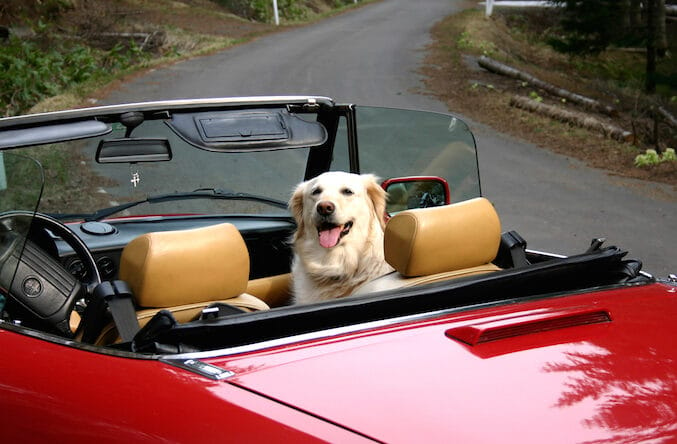7 Summer Car Care Tips to Help You (and Your Car) Keep Cool

Welcome to the height of summer.
While hot summer temperatures can have an advantage, such as killing viruses and germs that may make their way into your car–Ford engineered a heat-driven germ-killing process to sanitize police cars during the Covid-19 pandemic– those temps can do a number on humans in cars.
We know not to leave children or pets locked in cars and how to prevent this from happening.
But also, your poor car! It can suffer in the summer heat as well. If you don’t want to be stranded on the side of the road next to an overheated car (just try not to sweat through your blouse with the anxiety alone!), these seven summer care care tips can help you and your car keep your cool, even when the mercury climbs sky-high.
Related: Road Trips You Should Take this Summer According to Your Sign

Don’t let this be you this summer! ? David Wulff
7 Summer Car Care Tips to Help You (and Your Car) Keep Cool
1. Start with a safety check
Coolant is key to keeping your car from overheating in these extreme heat conditions. So the first step in summer care care is to check the coolant and radiator. Sitting in traffic on a hot day can quickly overheat your car. If you have low coolant levels, your engine temperature can rise fast. And what does that mean? Oh, yeah. You’ll be stranded on the side of the road.
2. While you’re at it – why not give your car a full check up?
It’s always better to be safe than sorry, especially when the alternative is not going anywhere. Or worse, ending up stranded along the way. Before you hit the road, make sure your lights, fluids, hoses, windshield wipers and tires are all in good working order.
3. Fill up your tank early in the morning or late at night
Gas is cooler earlier in the day and becomes denser as temperatures rise. Some experts recommend filling up your gas tank in cooler temperatures for more bang for your buck. Besides, do you really want to stand next to a blazing hot car in the midday heat while you wait for the tank to fill?
4. Check your tire pressure
Driving on under-inflated tires not only affects vehicle performance but can cause tires to overheat. With extreme heat conditions outside, tires should be checked and inflated to the pressure recommended by the vehicle manufacturer.
As a general rule, your tire pressure will gain or lose 1 PSI (pound per square inch) for every 10° F change in temperature. Check your air pressure when tires are ‘cold’ in the morning and compare that number to the sticker in your door jamb before hitting the road. Don’t forget to check the air in your spare, too.

5. Be prepared for any emergency
Always carry a well-stocked emergency kit in your car in case. Your emergency kit should include enough bottled water to keep you hydrated during a road trip – this is especially important during extreme heat – as well as non-perishable food items, jumper cables, flashlight with extra batteries, reflective triangles and first aid kit. It’s also a good idea to program your cell phone with emergency numbers, including that of your roadside assistance provider, and keep a backup written list in your glove compartment. Oh, and bring a spare cell battery, too, and keep it charged up. This is no time to have a dead phone!
6. Have your battery tested
Extreme heat conditions can drain your battery. You can’t control the temperature outside but you can visually inspect your battery to see any bulging, cracks or leaking. If your car battery is more than three years old, have it tested by a trained technician to avoid getting stuck on the road.
7. Cool down at your destination
This is the easy part! The best way to help your overheated car cool down is to simply turn it off (and park in the shade when you can). And the best way for you to cool off is to stay hydrated (lots of water), take frequent breaks from the heat, and get into some air conditioning if you can. And once you’re safely done with driving for the day, put your feet up and stay cool!


